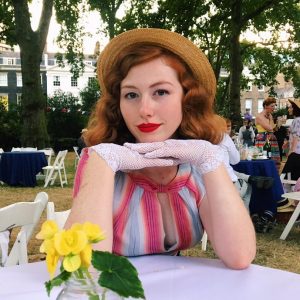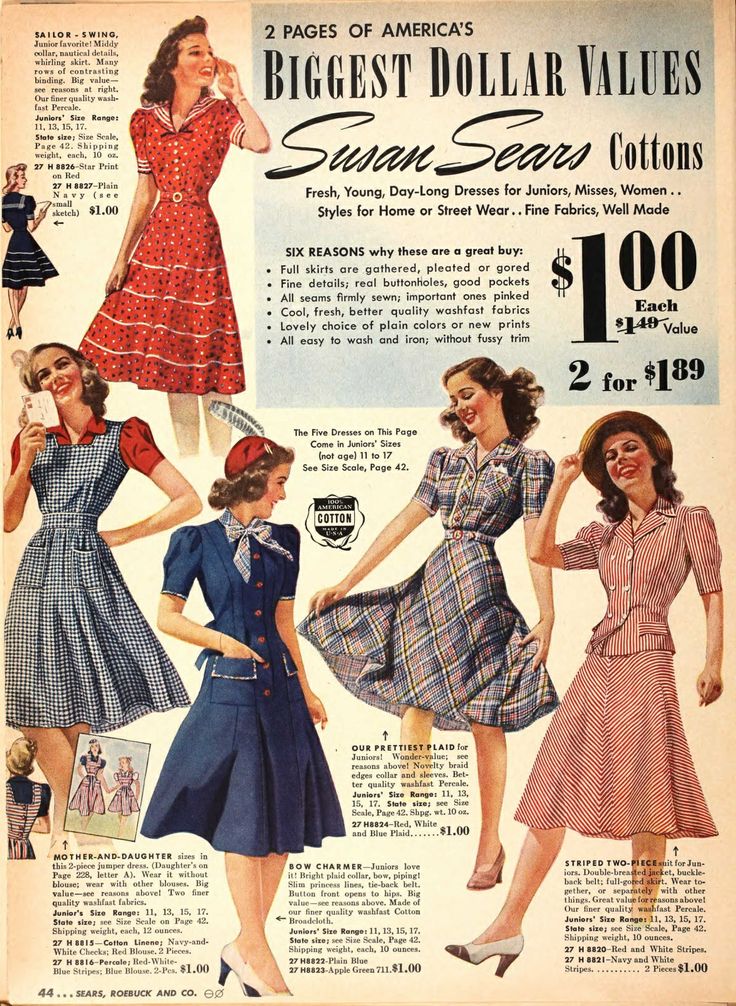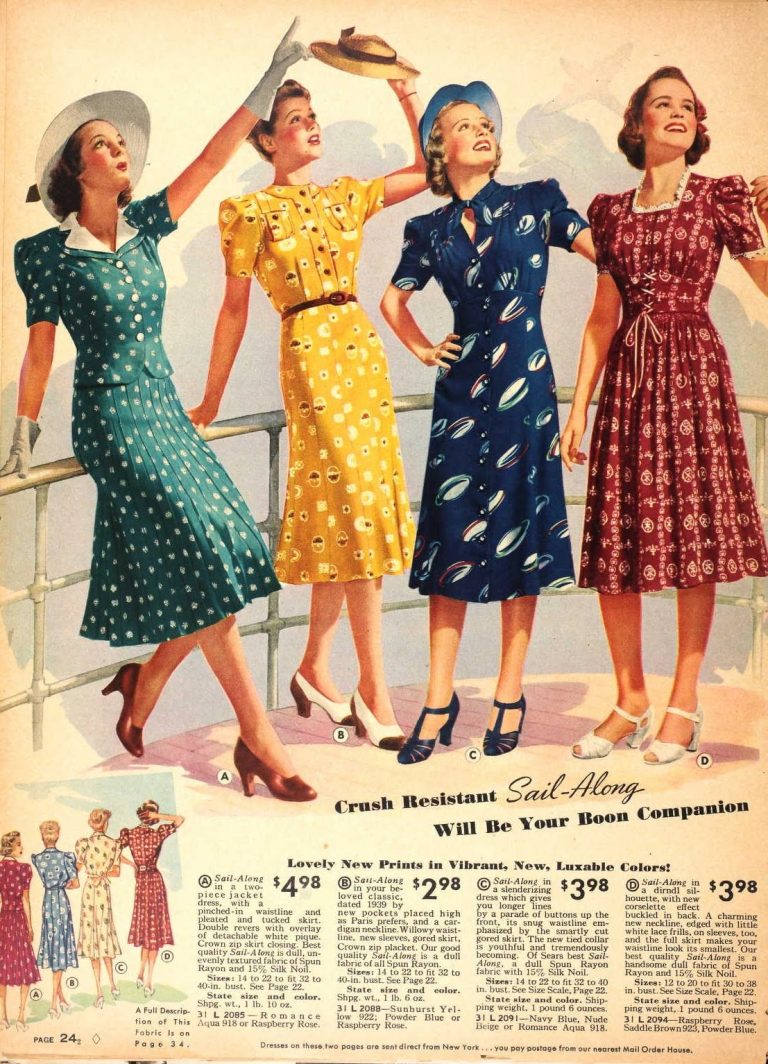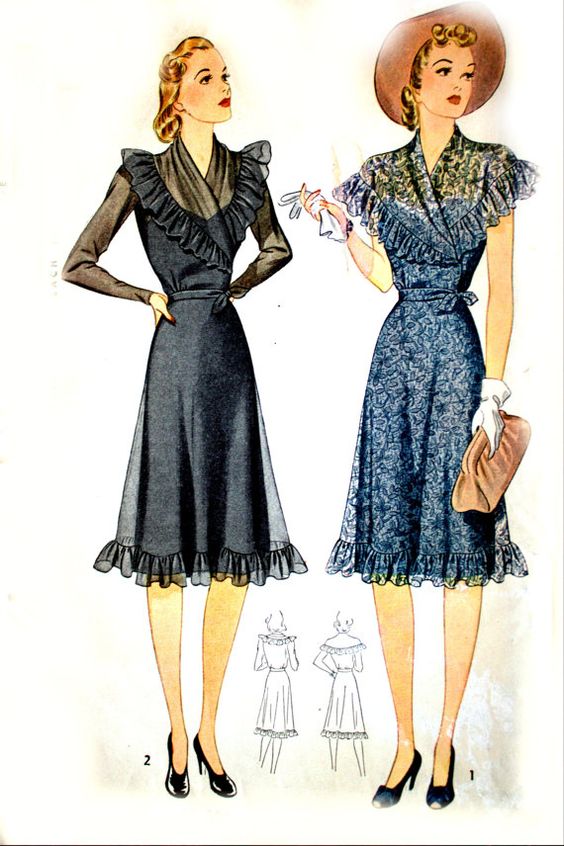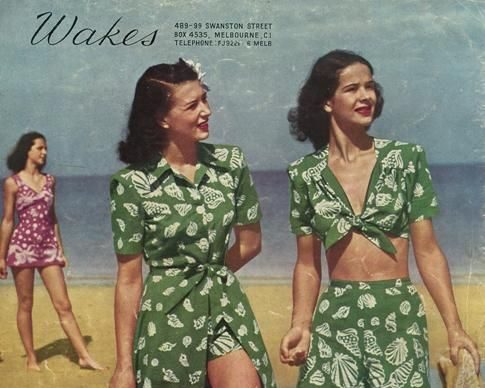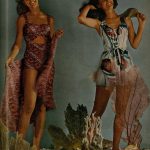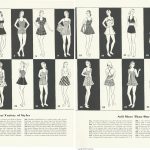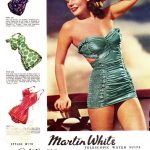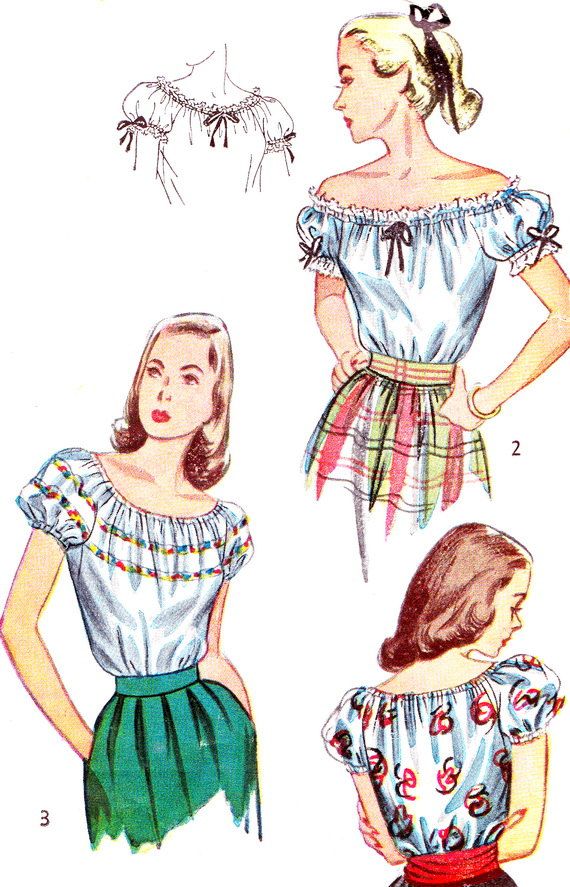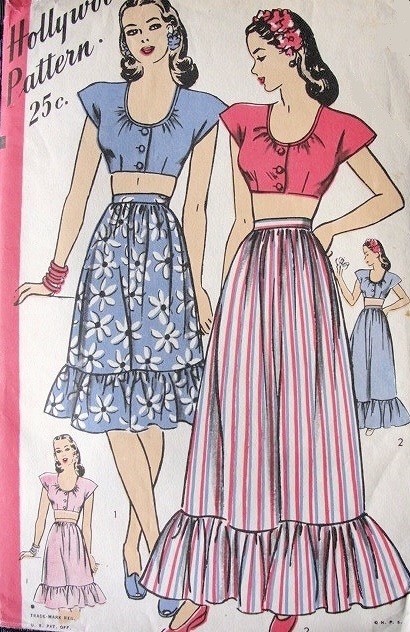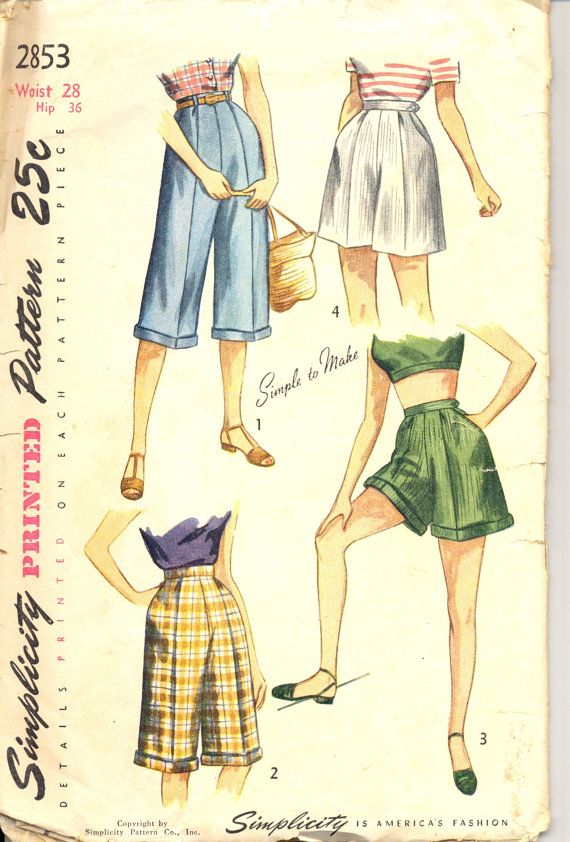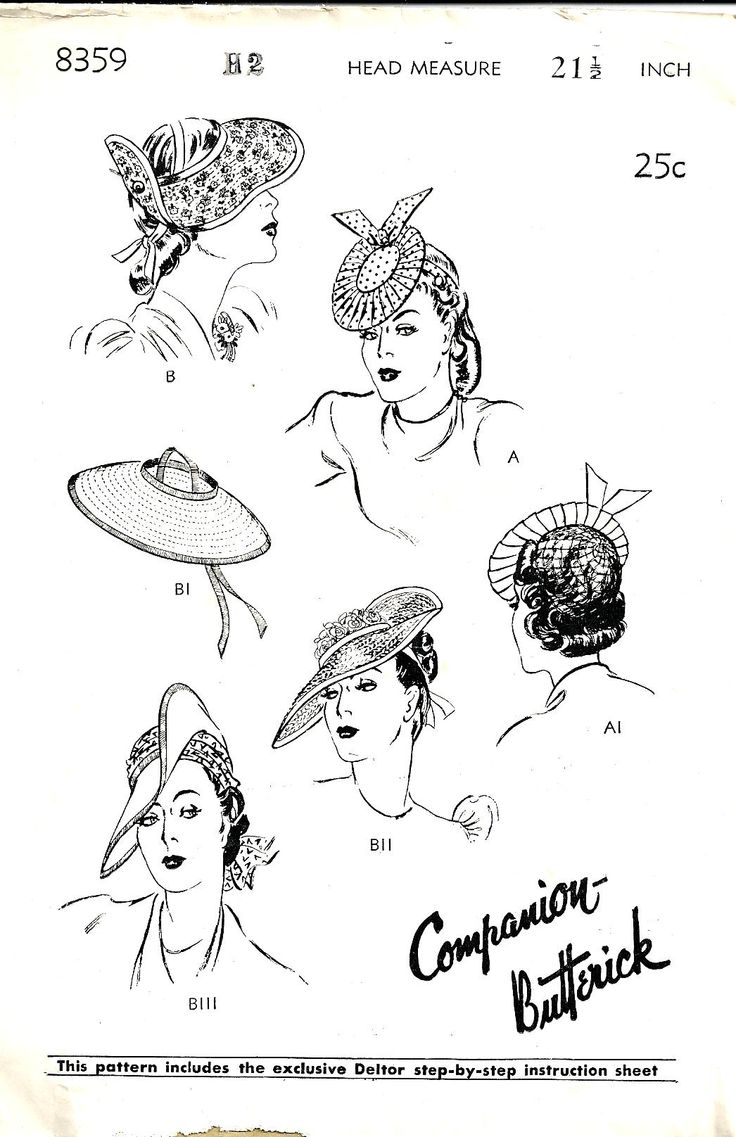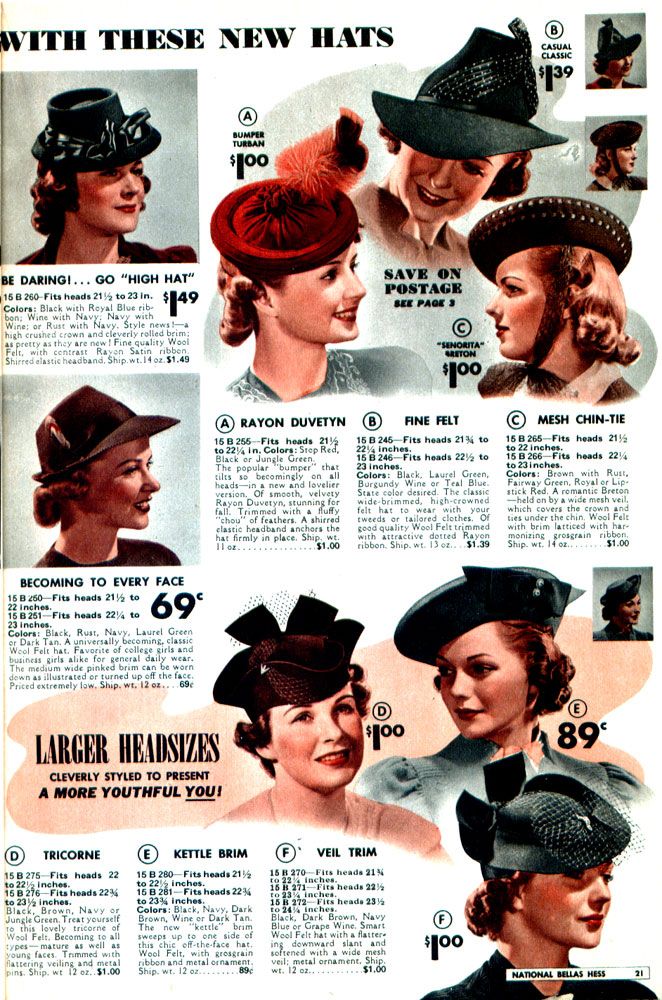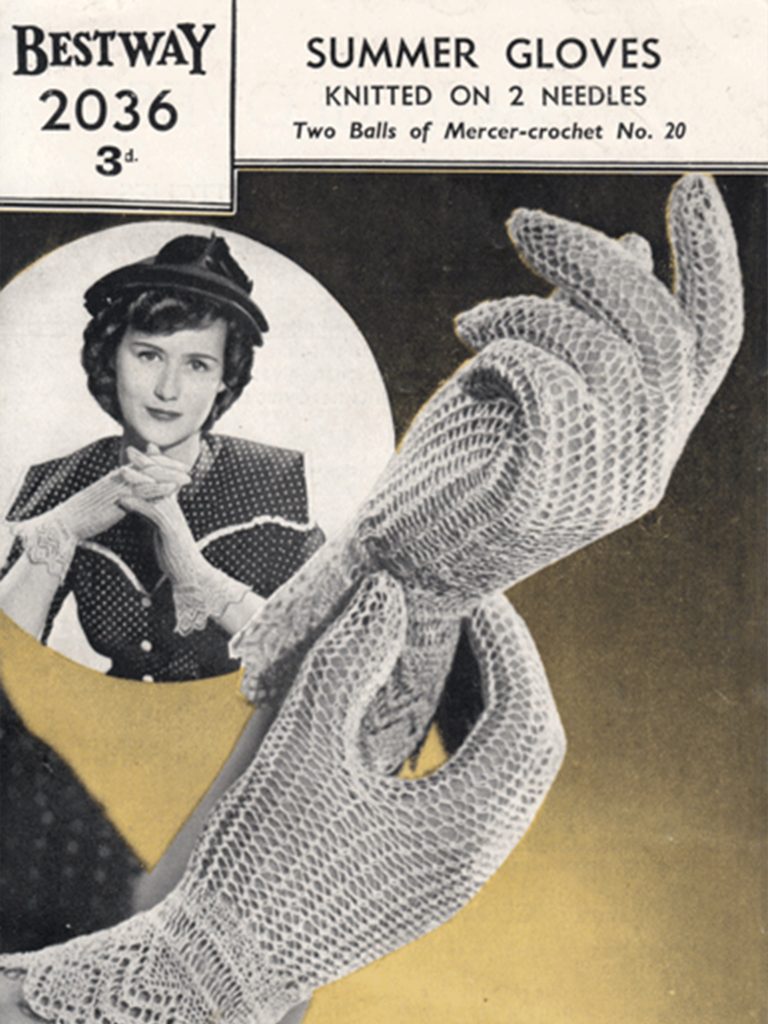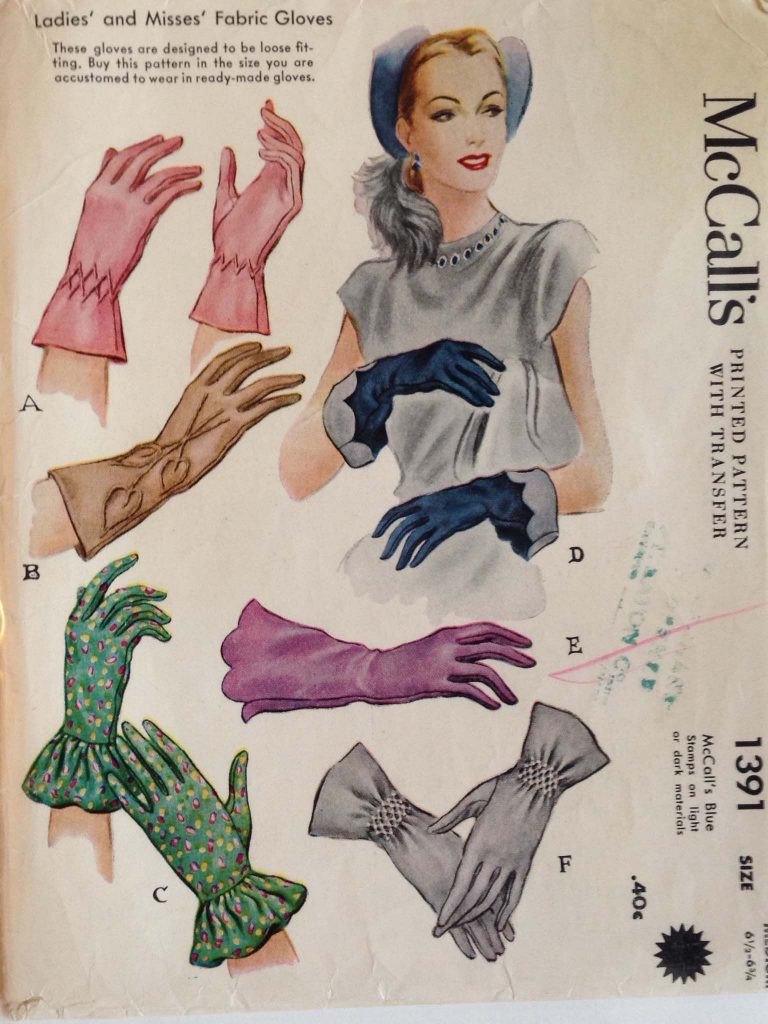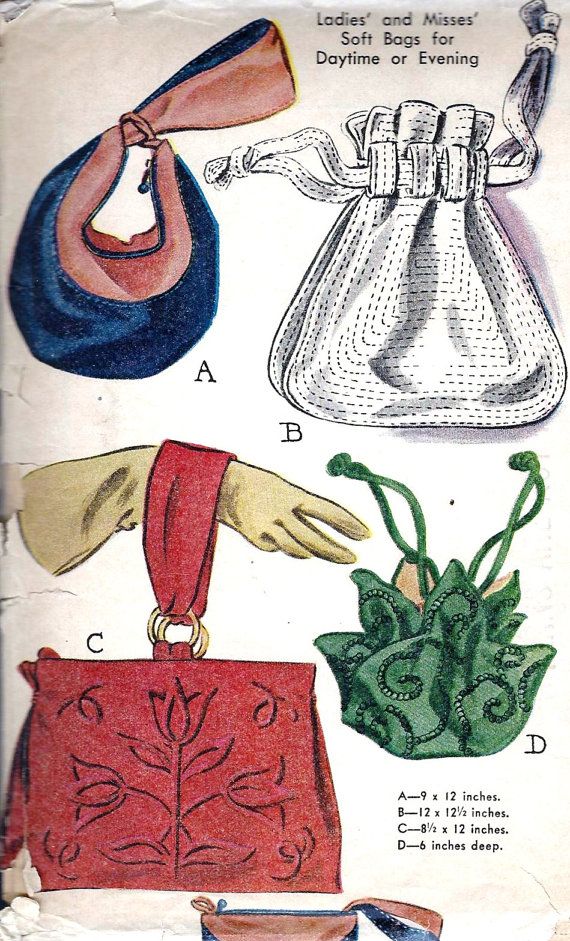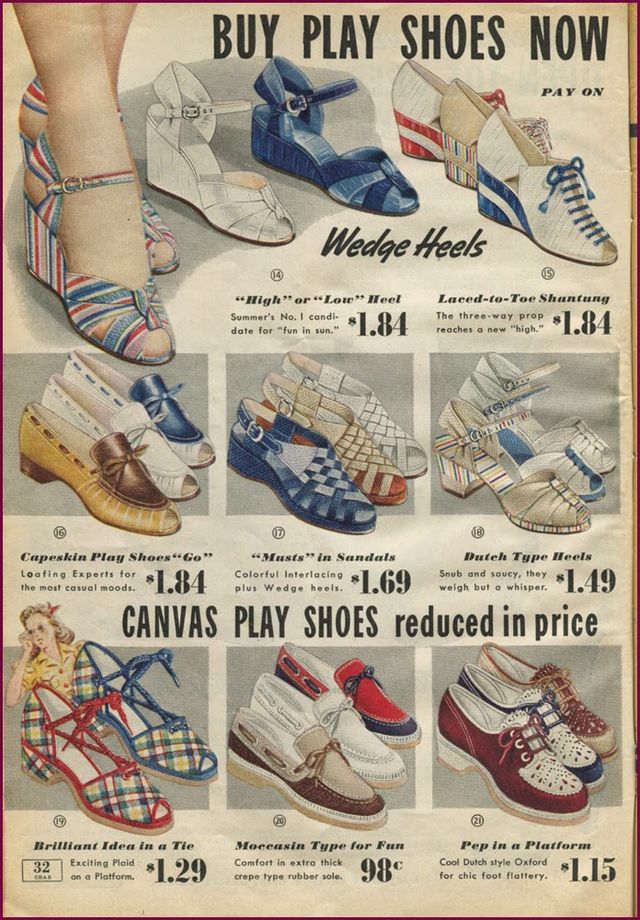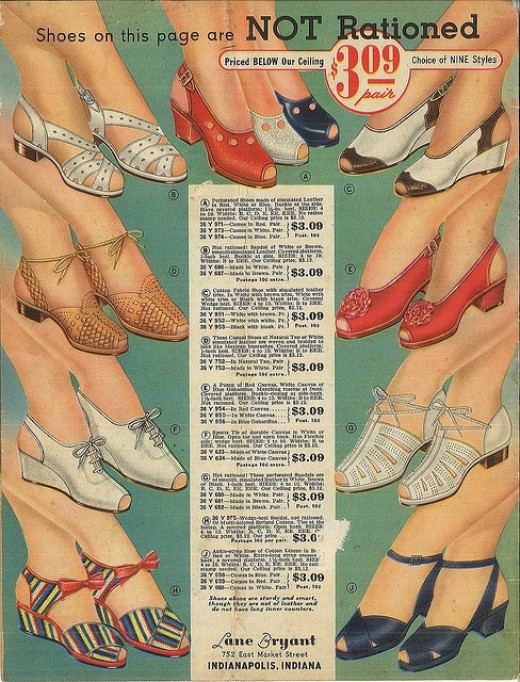1940s Summer Styles
And just like that, the long warm days of summer have arrived! As I switch out my wardrobe, hiding away the wool for the next few precious months of sunshine, I come to the age-old question: what is my summer wardrobe missing? This year I have turned to 1940s articles from Women’s Wear Dailyand Voguefor summer inspiration, and am pleased to report my findings here.
Dresses:
It always starts with a summery frock. In the 1940s, summer dresses featured in crisp classic cotton, rayon shantung, and a variety of sheer fabrics. Patterns abounded, with emphasis on printed and woven stripes and checks, and floral prints. Both solid and printed textiles were vibrant, featuring green or purple, bold yellows, bright reds, and every shade of blue from baby blue to aqua to navy. Sheer fabrics, whether crepe or mesh, were often in printed florals, or in black. Sheer dresses often featured ruffles, lace, or a contrasting underlay. For those in favour of a simpler summer look simply opted for white. Necklines were low, in square, u-shaped, and v-neck styles, and hemlines were high, revealing the calf.
Playsuits:
Unique to the summer season were playsuits. These multi-piece ensembles often comprised of matching top, skirt, and shorts. Prints also dominated here, ranging from candy-striped piqué to ‘Victorian floral wallpaper’ seersucker to cactus print cotton. Playsuits were frequently made in the same fabrics as bathing suits so that the two could be purchased together. Play-shorts were often worn paired with a swimsuit top, especially when the wearer was in and out of the water.
Swimsuits:
Bathing suits, the glory of summer for some, and the worst nightmare of others. In the 1940s, bathing suits were unprecedentedly revealing and form-fitting. They were most commonly one-pieces, with fitted bust and waist, and a flared skirt, shorts, or combination of both on the bottom. As the decade progressed, two-piece bathing suits gained popularity, but were considered daring and only for those with impeccable figures. These mildly scandalous swimsuits featured hip-hugging high waisted bottoms paired with a bra-like top. Towards the end of the decade, strapless tops became very popular, especially with those desiring an even suntan. Fabrics varied widely: wool, linen, bengaline, poplin, sharkskin, rayon jersey, and chintz all made appearances. Colours varied widely as well. White, navy, black, and red never fell out of fashion, and vibrant tones such as pink, aqua, yellow, wine, and royal blue tended to be popular. Stripes were widely used to create optical illusions on the body, while prints including florals and plaids were universally liked.
Separates: Blouses, Skirts, and Shorts
In the world of separates, short and cool pieces dominated. Silk or rayon crepe blouses were ever popular, particularly in dark brown, white, maize, rose, and lime. The most distinct trend for summertime blouses was the peasant blouse, which drew inspiration from both Russia and Mexico. These youthful rustic tops were typically white, decorated with colourful smocking, embroidery, or beading, and were most often paired with short and airy dirndl skirts. Printed cotton dirndls were popular, as were fuller cotton skirts in white, checks, plaids and stripes. Generally, skirt fabrics followed dresses. Blouses could also be paired with shorts, another summertime novelty. Shorts as separates were fashionable in summery trouser fabrics and ranged in length from mid-thigh to below the knee. Shorter styles regularly featured side pleats for fullness and movability. Short overalls also had their place and were worn with or without a blouse underneath.
Hats:
Accessories such as hats, gloves, bags, and shoes were incredibly crucial in completing a summertime look. Except for hats, white was the most highly prized colour for summer accessories. For hats, natural fibres dominated. Rustic straw hats and more refined Leghorns alike were most prevalent in natural, burnt wheat, black, brown, and navy. These were trimmed with bright ribbons, especially plaid, which matched or contrasted with the rest of the outfit. Panama and sailor hats were made from natural materials such as coconut and palm fibre, which lent the hat a beach-y, tropical feeling. Fabric hats were next in popularity, often in piqué or organdie, with self-flowers or bows, and trimmed with ribbons and feathers. ‘Discretely handled flowers’ were also a favorite summer trim, but were considered by many designers to be too obvious and slightly cliché. Finally, lightweight felt hats appeared as well, in homburg and fedora styles. These were worn in pink, lime, blue, toast, yellow, and light coffee. Panamas, sailors, homburgs, and fedoras frequently had undersized shallow crowns and were worn pushed forward on the head, and their wide brims were occasionally trimmed with lace or veil.
Gloves:
Gloves also ranged in style and colour, though white was always the first choice. White cotton and rayon, in mesh or plain weave, predominated. Mesh crocheted gloves were extremely popular for the warm weather and were produced in lengths from wristlet to elbow. While most commonly white, these gloves were worn in dark black and navy, and pastel colours such as pale blue, powder pink, daffodil, oyster white, and beige champagne. Bold, bright hues fast surpassed pastel gloves as the most popular. Jewel-toned suedes with openwork such as slashes and latticework were popular, as were two-toned gloves in combinations like chartreuse and blue, or fuchsia and blue. Printed rayon jersey gloves added an entirely new scope of possibility to wartime outfits. Patterns, including checks, stripes, polka dots, and florals added pizazz to everyday ensembles. Towards the end of the decade, sheer 15-denier nylon gloves were introduced in all lengths and were most prevalent in brown, black and navy, as well as toast, pink, and bright blue
Handbags:
What one held in her gloved hand mattered too. Summer handbags were most desired in, you guessed it, white. The production of plastic handbags, especially ‘plastic grain calf,’ or what we would today call ‘vegan leather’ made it easier than ever to keep a white bag clean. Woven and corded plastic handbags were fashionable as well. Besides plastic, heavy grade cotton was popular. The most preferred style was a pouch bag with a top handle. Naturals, red, pink, and green were secondary summer handbag colour choices.
Shoes:
Finally, what one wore on her feet could make or break her summer ensemble. All white or off-white linen, crushed leather, suede, or calf pumps, sandals, sling-backs, and playshoes were highly prized. Fabric playshoes were popular in wedge and sandal form, and were often bright red, green, pink, purple, or checked, to match or contrast with a summer dress. Platform sling-backs became fashionable, especially in white suede with a red, navy, or tan calf platform and heel. Brown and white two-toned spectators were the most prized of all summer shoes, but their rarity made all-white spectators more common. Rope-soled espadrilles in flat or wedged sandals were also very popular in white, brown, green, red and yellow. Peep-toe shoes were especially popular in the summer, as they provided ventilation to help keep feet cool. So too did perforations and cut-outs.
The most prized colour for summer was white. Even so, garments and accessories alike traded between white and bolder, vibrant colours. Staying cool was as important then as it is now, as was looking chic. The restrictions of wartime limited what materials were available, but could not limit the imagination.
Follow Jeordy Raines
Want more? Check out Jeordy’s 1930s Spring Styles article.

